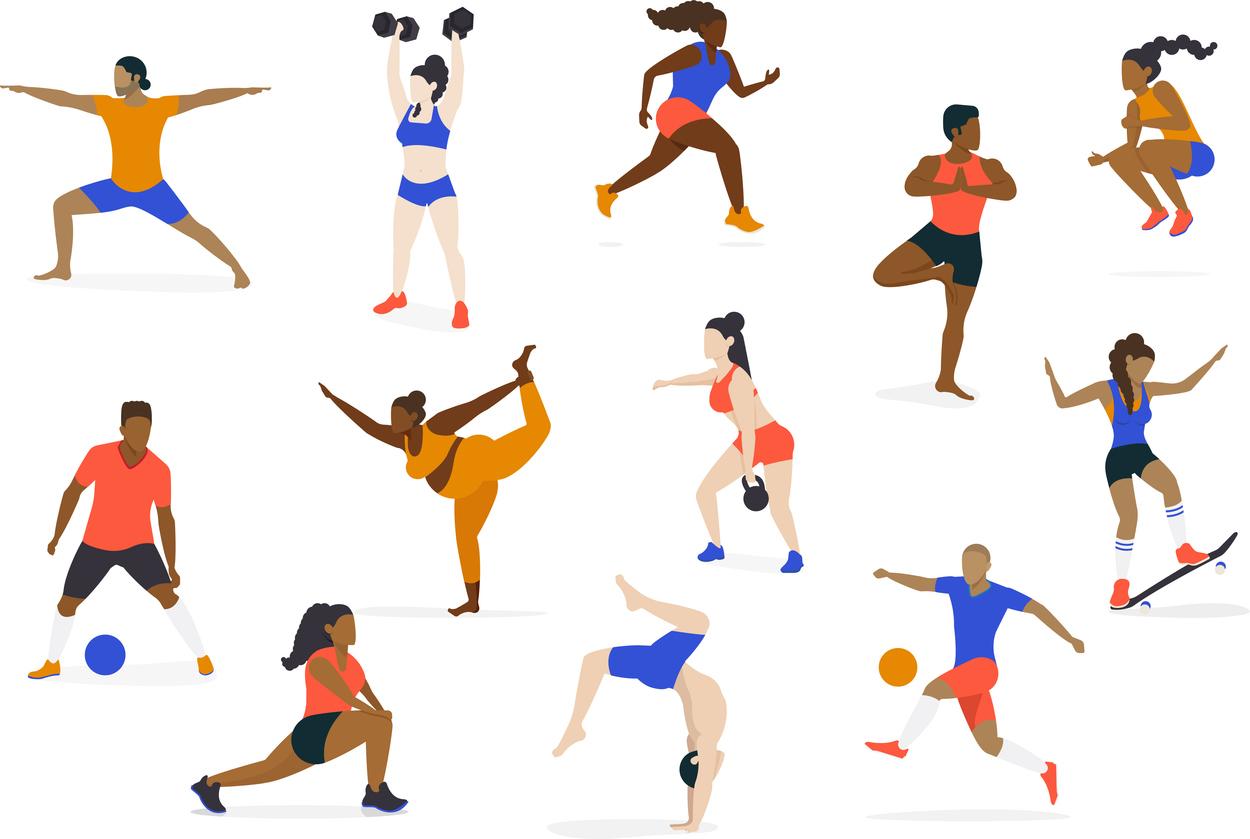RED-S, or Sport-Related Energy Deficiency, is a threat that should not be overlooked among young high-level athletes. Some elements to better understand.

- RED-S, or sport-related energy deficit syndrome, is the consequence of an energy imbalance between physical expenditure and nutritional intake when practicing sport.
- RED-S has numerous repercussions on the body: hormonal disturbances, particularly menstrual disturbances (for girls), reduction in bone density with risks of stress fractures, impaired immunity, eating disorders, psychological disorders …
- To avoid RED-S, it is necessary for the athlete to have a balanced diet commensurate with the intensity of his training and his energy expenditure, while avoiding overtraining.
The “Endocrinolympiads”, a day of April 5, 2024 dedicated to sport, hormones and health and organized as part of the Olympic and Paralympic Week by the French Society of Endocrinology, allowed us to find out a little more about the RED-S, a little-known syndrome in which the CIO (International Olympic Committee) from 2014.
A real danger of excessive and unsupervised sport
RED-S or Relative Energy Deficiency in Sports syndrome was discussed at length during the day which took place at Paris Cité University, in Paris. And for good reason, little known to the general public, this pathology constitutes a real danger for high-level athletes, but also for those who practice recreational sports in excess and without a certain nutritional balance.
It occurs at any age, but most often in young athletes, during physical training for more than 15 hours/week, and when energy intake is insufficient. It is especially encountered when physical appearance is an important element in sports practice (dancers, gymnasts, figure skaters, cyclists, etc.), or when weight and body composition (fat mass/lean mass) are essential as in certain disciplines where there are weight categories (combat sports, etc.).
Energy spent greater than energy stored
RED-S occurs when the energy expended by the athlete is greater than the energy absorbed. In this case, the body no longer has the energy reserves necessary to fuel the body’s physiological processes. There is an imbalance between physical expenditure and nutritional intake.
And this too low energy availability in an athlete has serious consequences on health if it is not treated. Indeed, the repercussions of this alteration of energy metabolism are a reduction in musculoskeletal health, immune disorders and abnormalities of reproductive functions (at the level of the sexual organs) and therefore of puberty, as well as growth.
We know that there are variations depending on the gender, age and genetic profile of the athlete.
Girls as affected as boys
According to Professor Martine DUCLOS, head of the sports medicine and functional explorations department at Clermont-Ferrand University Hospital, the “ risk of energy deficit relating to sport exists in both girls and boys ”, but she specifies that “ boys can tolerate a greater energy deficit than girls ” and ” physio-pathological disorders also arrive later in them “.
The scientist explains that the “ essential tripod for high-level athletes is a balanced diet, regular menstrual cycles (for girls) and good bone health “. In the case of a RED-S, the triad is reversed with “ low energy availability, menstrual cycle disorders and poor bone health “. This can be transposed to the practice of intensive leisure sport!
Among young girls, “ the profile of sports amenorrhea (absence of periods) is reduced fat mass and energy availability (the body has less energy at its disposal, Editor’s note) chronically diminished at the quantitative and qualitative level “.
The psychological consequences are not negligible, possibly leading to depression and compulsive eating disorders such as anorexia.
RED-S is also responsible for chronic fatigue and concentration problems.
The other danger of RED-S highlighted by the specialist is stress fracture, very frequently encountered in this case and due to a reduction in bone density.
Sports performance is therefore truly impaired and the risk of injuries and diseases (particularly cardiovascular) is increased.
Be careful with the ketogenic diet
Professor Duclos also warns of the ketogenic diet (intake low in carbohydrates, moderate in proteins and rich in lipids) often followed by athletes but which constitutes a real risk of RED-S.
But of course, we must keep in mind that, according to Professor Yves LE BOUC, Unit Director at INSERM and Head of the Endocrine Functional Explorations department at the Armand Trousseau hospital in Paris, the “ sport is beneficial in childhood and adolescence, particularly for psychological and physical development, but without losing sight of the fact that there is a “possibility of risk of energy deficit relating to sport if the intensity of the physical activity is important “.
Complex and multidisciplinary care
The management of RED-S must be multidisciplinary thanks to, among others, doctors (for medical support and monitoring), nutritionists (for dietary rebalancing), psychologists (for mental health).
The effects of certain hormones have been highlighted. What Professors Duclos and Le Bouc confirm, notably with the leptin and the ghrelinwhich could be used as potential treatments.
Prevention of this syndrome is essential. It involves a balanced diet, appropriate training, but also changes in the culture of sport around body image and weight. It is therefore essential to raise awareness among athletes but also their coaches and those around athletes (including parents).
While remaining widely recommended for good health, let us not forget that sport in a context of overtraining, especially if it occurs outside of a balanced diet and without any control, can thus harm bone development and growth, and cause numerous pathologies.

















